Stewart J. College Algebra: Concepts and Contexts
Подождите немного. Документ загружается.

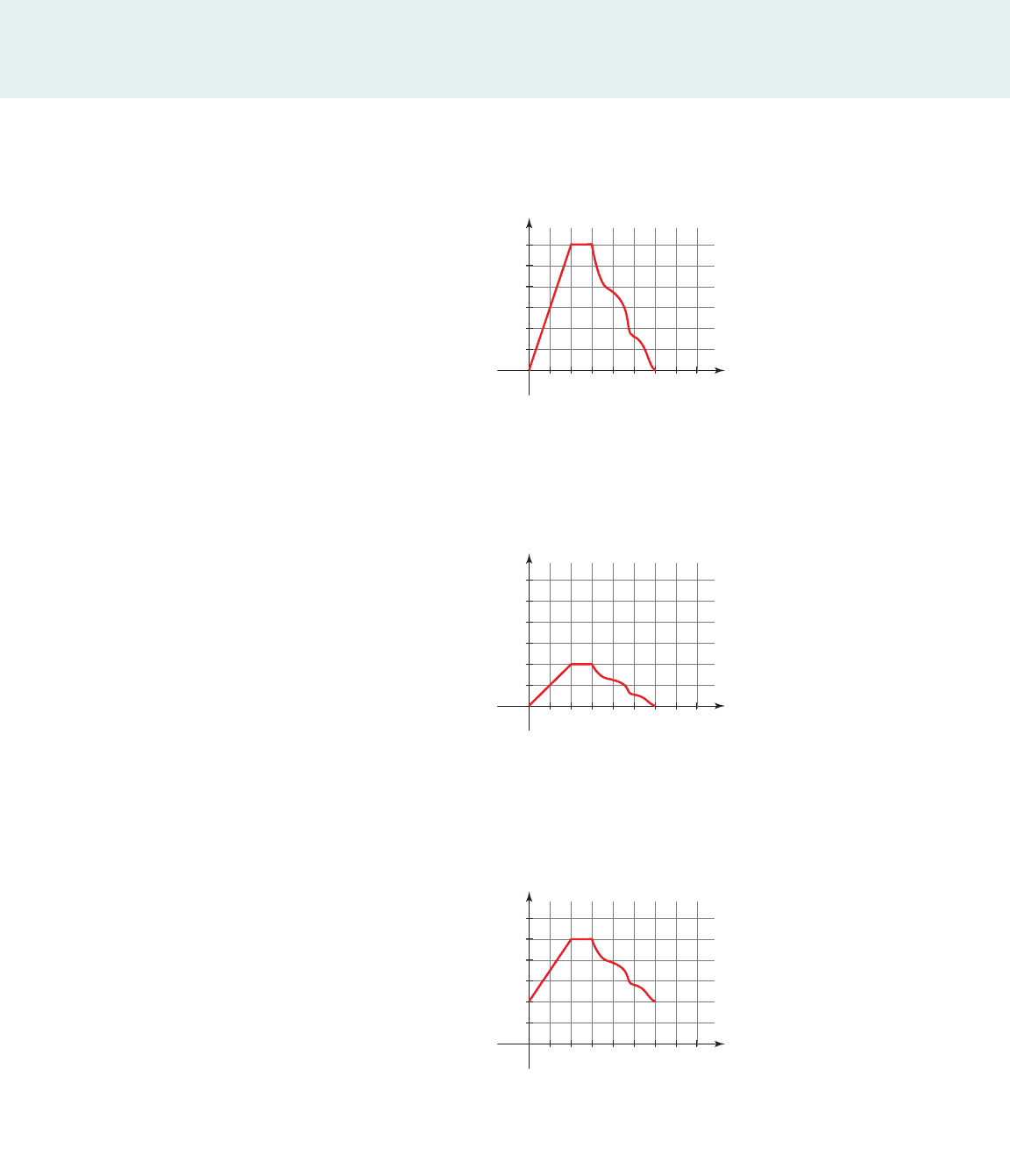
EXPLORATIONS
■
EXPLORATIONS
■
EXPLORATIONS
■
EXPLORATIONS
2. The graph gives Jerome’s distance from home at time t.B1t 2
Verbal: ____________________________________
Symbolic: ____________________________________
Story: ____________________________________
3. The graph gives Jerome’s distance from home at time t.C1t2
d (mi)
t (h)
0
12345678
20
40
60
80
100
120
B
d (mi)
t (h)
0
12345678
20
40
60
80
100
120
C
Verbal: ____________________________________
Symbolic: ____________________________________
Story: ____________________________________
d (mi)
t (h)
0
12345678
20
40
60
80
100
120
D
Verbal: ____________________________________
Symbolic: ____________________________________
Story: ____________________________________
4. The graph gives Jerome’s distance from home at time t.D1t 2
474 CHAPTER 5
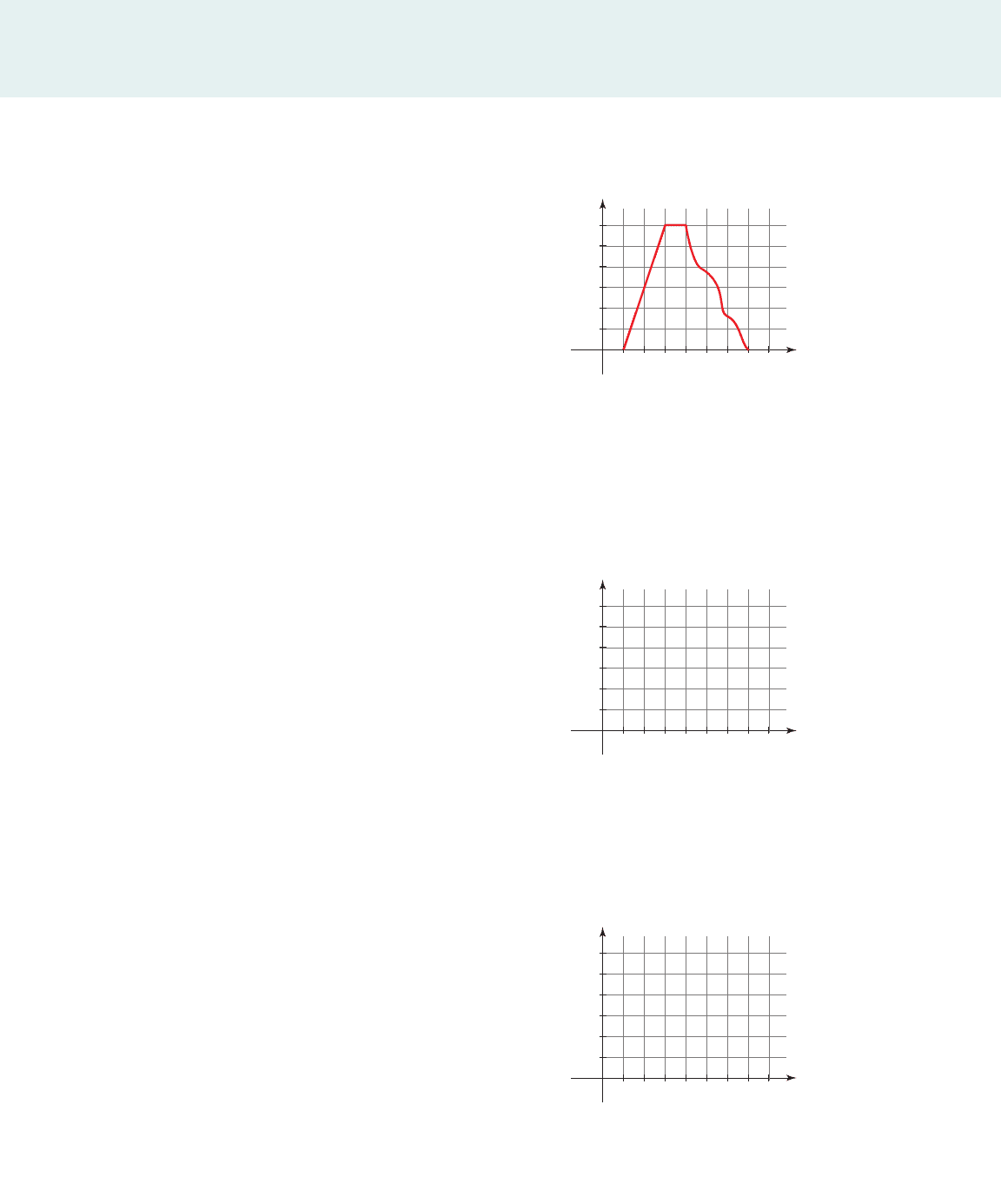
EXPLORATIONS
■
EXPLORATIONS
■
EXPLORATIONS
■
EXPLORATIONS
5. The graph gives Jerome’s distance from home at time t.E1t 2
d (mi)
t (h)
0
12345678
20
40
60
80
100
120
E
Verbal: ____________________________________
Symbolic: ____________________________________
Story: ____________________________________
II. Making a Transformation Story
Let’s make up a story about Jerome’s trip by using transformations.
1. Make a graph and describe a story that corresponds to the verbal description
of a transformation of Jerome’s original trip:
d (mi)
t (h)
0
12345678
20
40
60
80
100
120
Verbal: ____________________________________
Symbolic: ____________________________________
Story: ____________________________________
2. Make up your own transformations and story about Jerome’s trip. Provide
verbal, symbolic, and graphical descriptions of the transformations you have
used, and then give a real-world description of the trip.
d (mi)
t (h)
0
12345678
20
40
60
80
100
120
Verbal: ____________________________________
Symbolic: ____________________________________
Story: ____________________________________
475
Shift 2 units to the right and two units up.
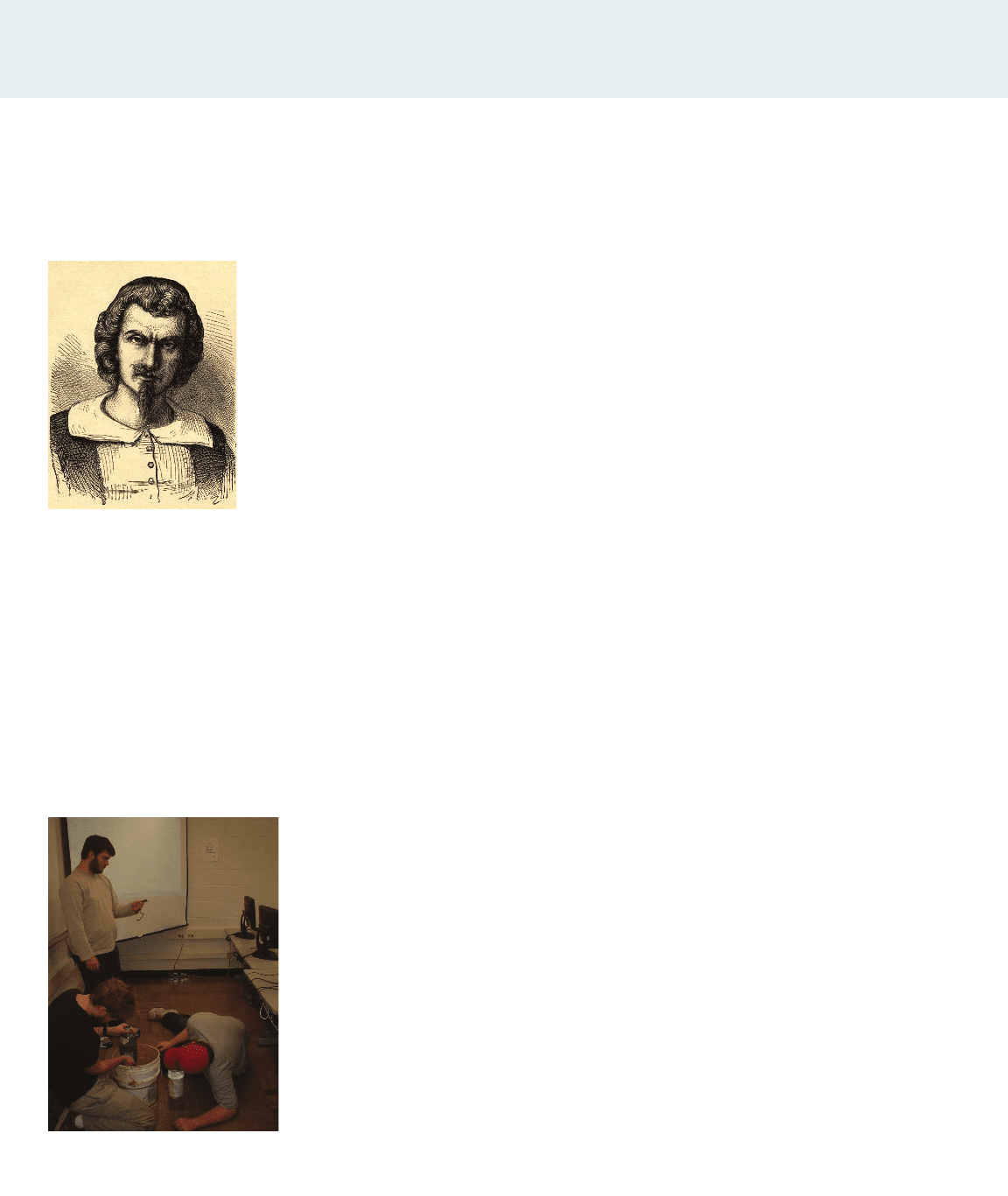
Torricelli’s Law
OBJECTIVE To obtain an expression for Torricelli’s Law by fitting a quadratic
function to data obtained from a simple experiment.
Evangelista Torricelli (1608–1647) was an Italian mathematician and scientist. He is
best known for his invention of the barometer. In Torricelli’s time it was known that
suction pumps were able to raise water to a limit of about 9 meters, and no higher.
The explanation at the time was that the vacuum in the pump could support the
weight of only so much water. In studying this problem, Torricelli thought of using
mercury, which is 14 times heavier than water, to test this theory. He made a one-
meter-long tube sealed at the top end, filled it with mercury, and set it vertically in a
bowl of mercury. The column of mercury fell to about 76 cm, leaving a vacuum at
the top of the tube. In an impressive leap of insight, Torricelli realized that the col-
umn of mercury is held up not by the vacuum at the top of the tube, but rather by the
air pressure outside the tube pressing down on the mercury in the bowl. He wrote:
I claim that the force which keeps the mercury from falling . . . comes from outside the
tube. On the surface of the mercury which is in the bowl rests the weight of a column
of fifty miles of air. Is it a surprise that . . . [the mercury] should rise in a column high
enough to make equilibrium with the weight of the external air which forces it up?
The device Torricelli made was the first barometer for measuring air pressure.
Another of Torricelli’s discoveries, based on the same principle but applied to
water pressure, is that the speed of a fluid through a hole at the bottom of a tank is
related to the height of the fluid in the tank. The precise relationship is known as
Torricelli’s Law.
I. Collecting the Data
In this exploration we use easily obtainable materials to conduct an experiment and
collect data on the speed of water leaking through a hole at the bottom of a cylindri-
cal tank. To do this, we measure the height of the water in the tank at different times.
You will need:
■
An empty 2-liter plastic soft-drink bottle
■
A method of drilling a small (4 mm) hole in the plastic bottle
■
Masking tape
■
A metric ruler or measuring tape
■
An empty bucket
Procedure:
This experiment is best done as a classroom demonstration or as a group project with
three students in each group: a timekeeper to call out seconds, a bottle keeper to es-
timate the height every 10 seconds, and a record keeper to record these values.
1. Drill a 4 mm hole near the bottom of the cylindrical part of a 2-liter plastic
soft-drink bottle. Attach a strip of masking tape marked in centimeters from 0
to 10, with 0 corresponding to the top of the hole.
2. With one finger over the hole, fill the bottle with water to the 10-cm mark.
Place the bottle over the bucket.
2
Evangelista Torricelli
EXPLORATIONS
■
EXPLORATIONS
■
EXPLORATIONS
■
EXPLORATIONS
© mediacolor’s/Alamy
Richard Le Borne
476 CHAPTER 5
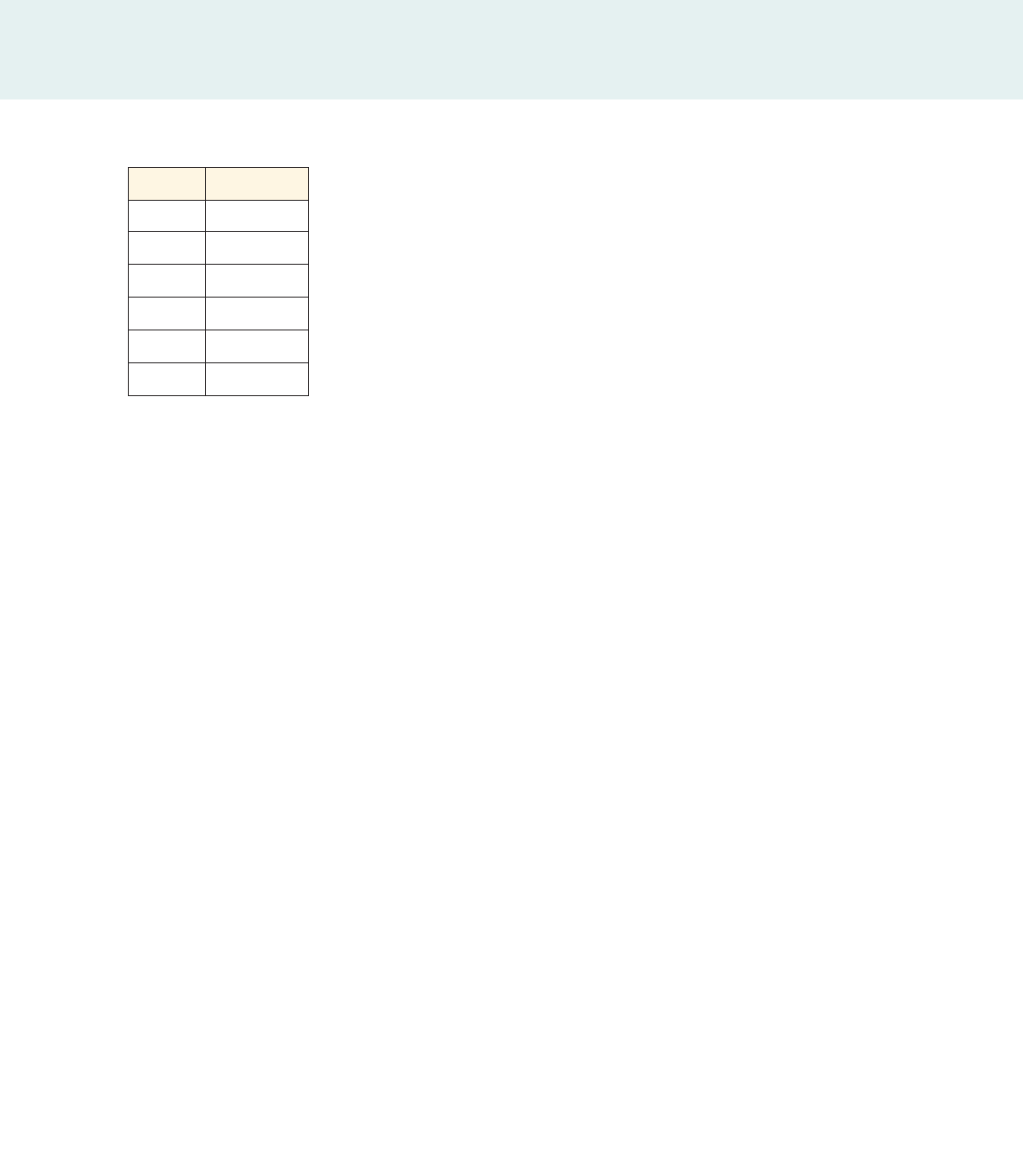
3. Take your finger off the hole to allow the water to leak into the bucket. Record
the values of height of the water for seconds.
II. Testing the Theory
Torricelli’s Law states that when a fluid leaks through a hole at the bottom of a cylin-
drical tank, the height h of fluid in the tank is related to the time t the fluid has been
leaking by a quadratic function:
where the coefficients a, b, and c depend on the type of fluid, the radii of the cylin-
der and the hole, and the initial height of the fluid.
1. Use a graphing calculator to find the quadratic function that best fits the data.
2. Graph the function you found together with a scatter plot of the data in the
same viewing rectangle. Does the graph appear to fit the data well?
III. Another Method
Torricelli’s Law actually gives more information about the form of the quadratic
function model. It can be shown that the function defining the height of the fluid can
be expressed as
where the coefficients C and k depend on the type of fluid, the radii of the cylinder
and the hole, and the initial height of the fluid.
1. Let’s find C and k for the experiment we conducted in Part I.
(a) Use the fact that the height of the water is 10 cm when the time t is 0
to solve for C in the above equation.
(b) Use the height you obtained in the experiment when the time t is 60
seconds and the value of C you obtained in part (a) to solve for k in the
above equation.
.
(c) Use the results of parts (a) and (b) to find an expression for .
2. Expand the expression for that you obtained in 1(c).
How does this model compare with the model you got in Part II?
h1t 2=
ⵧ
t
2
+
ⵧ
t +
ⵧ
h1t 2
h1t 2= 1
ⵧ
-
ⵧ
t2
2
h1t 2
k = ________
h1t 2
C = ________
h1t 2
h1t 2= 1C - kt2
2
h1t 2=
ⵧ
t
2
+
ⵧ
t +
ⵧ
h1t 2= at
2
+ bt + c
t = 10, 20, 30, 40, 50, and 60h1t2
EXPLORATIONS
■
EXPLORATIONS
■
EXPLORATIONS
■
EXPLORATIONS
Time (s) Height (cm)
10
20
30
40
50
60
EXPLORATIONS 477
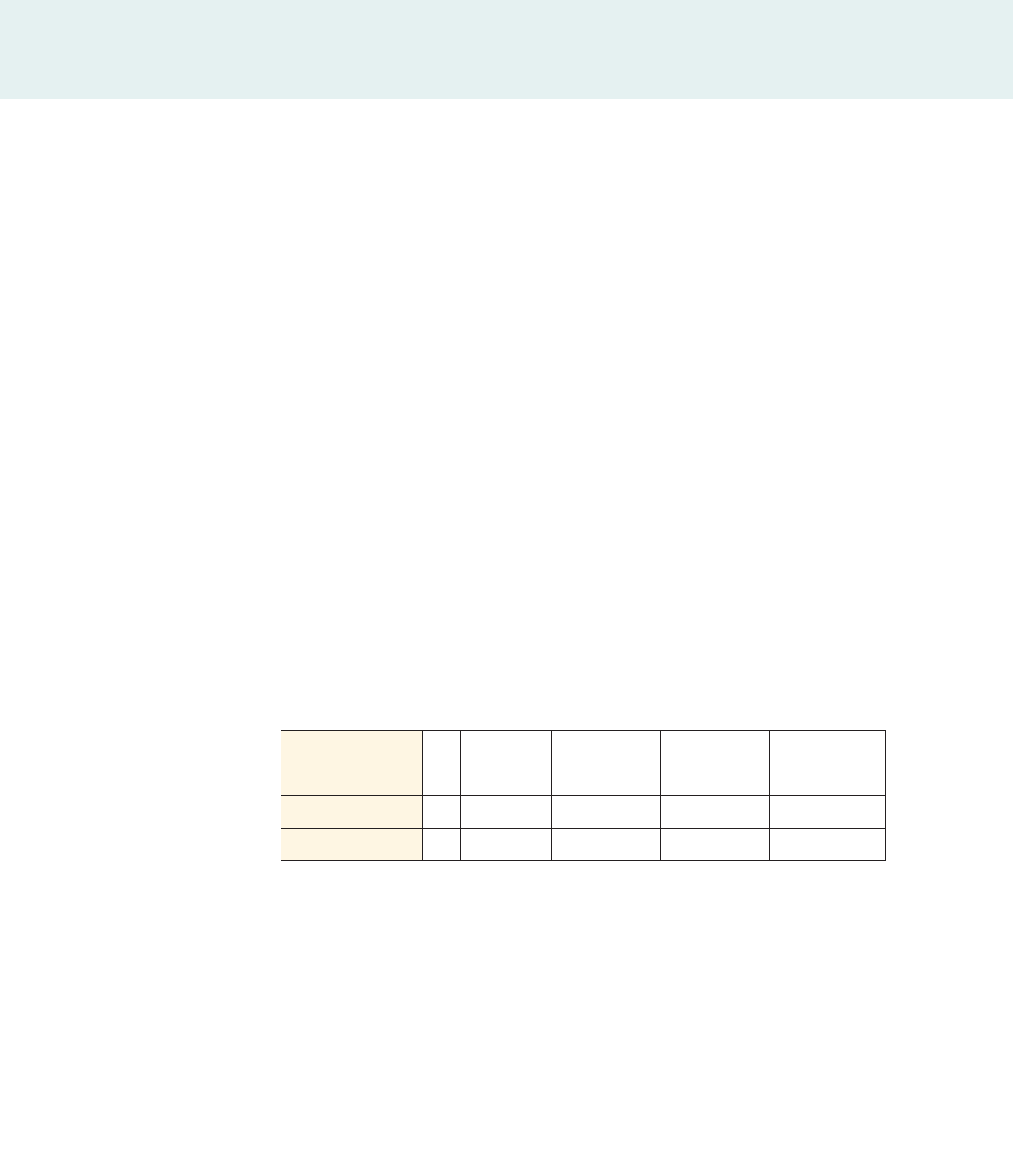
Quadratic Patterns
OBJECTIVE To recognize quadratic data and find quadratic functions that fit the
data exactly.
In Exploration 2 of Chapter 2 (page 233) we discussed the importance of finding pat-
terns, and we found many linear patterns. In Exploration 2 of Chapter 3 (page 315)
we found exponential patterns. In this exploration we find quadratic patterns. We’ve
already seen how quadratic functions model many real-world phenomena. But quad-
ratic patterns also occur in unexpected places, such as in cutting a pizza, as we’ll see
in this exploration.
I. Recognizing Quadratic Data
In this exploration we assume that the inputs are the equally spaced numbers
We want to find properties of the outputs that guarantee that there is a quadratic func-
tion that exactly models the data. So let’s consider the quadratic function
We find the first differences of the outputs and the second differences—that is, the
differences of the first differences. In the next question you are asked to perform the
calculations that confirm the entries in the following table. In particular, the second
differences are constant.
f 1x2= ax
2
+ bx + c
0, 1, 2, 3, p
1. For the quadratic function , let’s consider the inputs 0, 1,
2, 3, . . .
(a) Find the outputs corresponding to the inputs 0, 1, 2, 3, . . . .
_______ , _______ , _______ , _______
(b) Use your answers to part (a) to find the first differences:
_______ , _______ , _______
(c) Use your answers to part (b) to find the second differences:
_______ , _______ , _______
(d) Do your answers to parts (a)–(c) match the entries in Table 1?
f 132- f 122=f 122- f 112=f 112- f 102=
f 132=f 122=f 112=f 102=
f 1x2= ax
2
+ bx + c
3
x 0 1 2 3 4
f 1x 2
c
a + b + c 4b + 2b + c 9b + 3b + c 16b + 4b + c
First difference —
a + b 3a + b 5a + b 7a + b
Second difference — — 2a 2a 2a
EXPLORATIONS
■
EXPLORATIONS
■
EXPLORATIONS
■
EXPLORATIONS
table 1
Second differences for f 1x 2= ax
2
+ bx + c
478 CHAPTER 5
2a
c
a + b
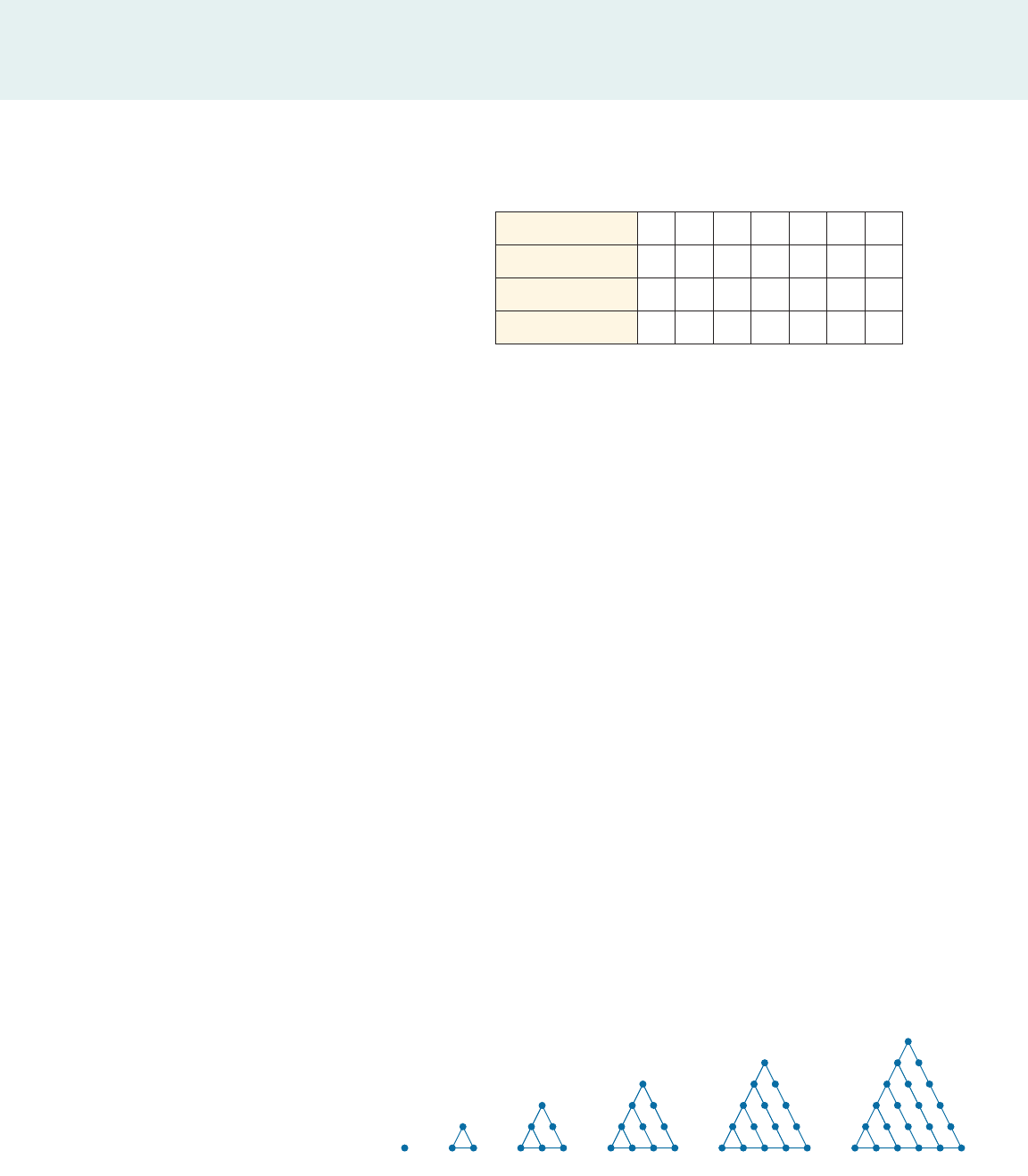
2. A data set is given in the table.
EXPLORATIONS
■
EXPLORATIONS
■
EXPLORATIONS
■
EXPLORATIONS
(a) Fill in the entries for the first and second differences.
(b) Observe that the second differences are constant, so there is a quadratic
function
that models the data. To find a, b, and c, let’s compare the entries in this
table to those in Table 1. Comparing the output corresponding to the input
0 in each of these tables, we conclude that
c _____________
Comparing the second differences in each of these tables, we conclude
that
2a _____________
Comparing the first differences in each of these tables, we conclude that
a b _____________
So a _______ , b _______ , and c _______ .
(c) A quadratic function that models the data is
(d) Check that the function f you found in part (b) matches the data. That is,
check that match the y-values in the data.
II. The Triangular Numbers
Many real-world situations have quadratic patterns. Here, we experiment with the
triangular numbers. The triangular numbers are the numbers obtained by placing
dots in a triangular shape as shown.
f 102, f 112, f 122, . . .
f 1x2= ____x
2
+ ____x + ____
f 1x2= ax
2
+ bx + c
x 0 1 2 3 4 5 6
y 5 10 19 32 49 70 95
First difference —
Second difference — —
121151063
EXPLORATIONS 479

1. Let’s find a formula for the nth triangular number.
(a) Complete the table for the first and second differences of the triangular
numbers
n 0 1 2 3 4 5
Triangular number f 1n2
1 3 6 10 15 21
First difference —
Second difference — —
EXPLORATIONS
■
EXPLORATIONS
■
EXPLORATIONS
■
EXPLORATIONS
(b) Observe that the second differences are constant, so there is a quadratic
function
that models the data. Find a, b, and c by comparing the entries in the table
in part (a) to those in Table 1. Comparing the output corresponding to the
input 0 in each of these tables, we conclude that
c ____________
Comparing the second differences in each of these tables, we conclude
that
2a ____________
Comparing the first differences in each of these tables, we conclude that
a b ____________
So _______ , _______ , and _______ .
(c) A quadratic function that models the data is
Check that the function f models the data exactly. That is, check that
, . . . are the first, second, third, . . . triangular numbers.
(d) Use the model you found in part (c) to find the 100th triangular number
(when n is 100).
f 102, f 112, f 122
f 1n2= ____n
2
+ ____n + ____
c =b =a =
f 1n2= an
2
+ bn + c
480 CHAPTER 5
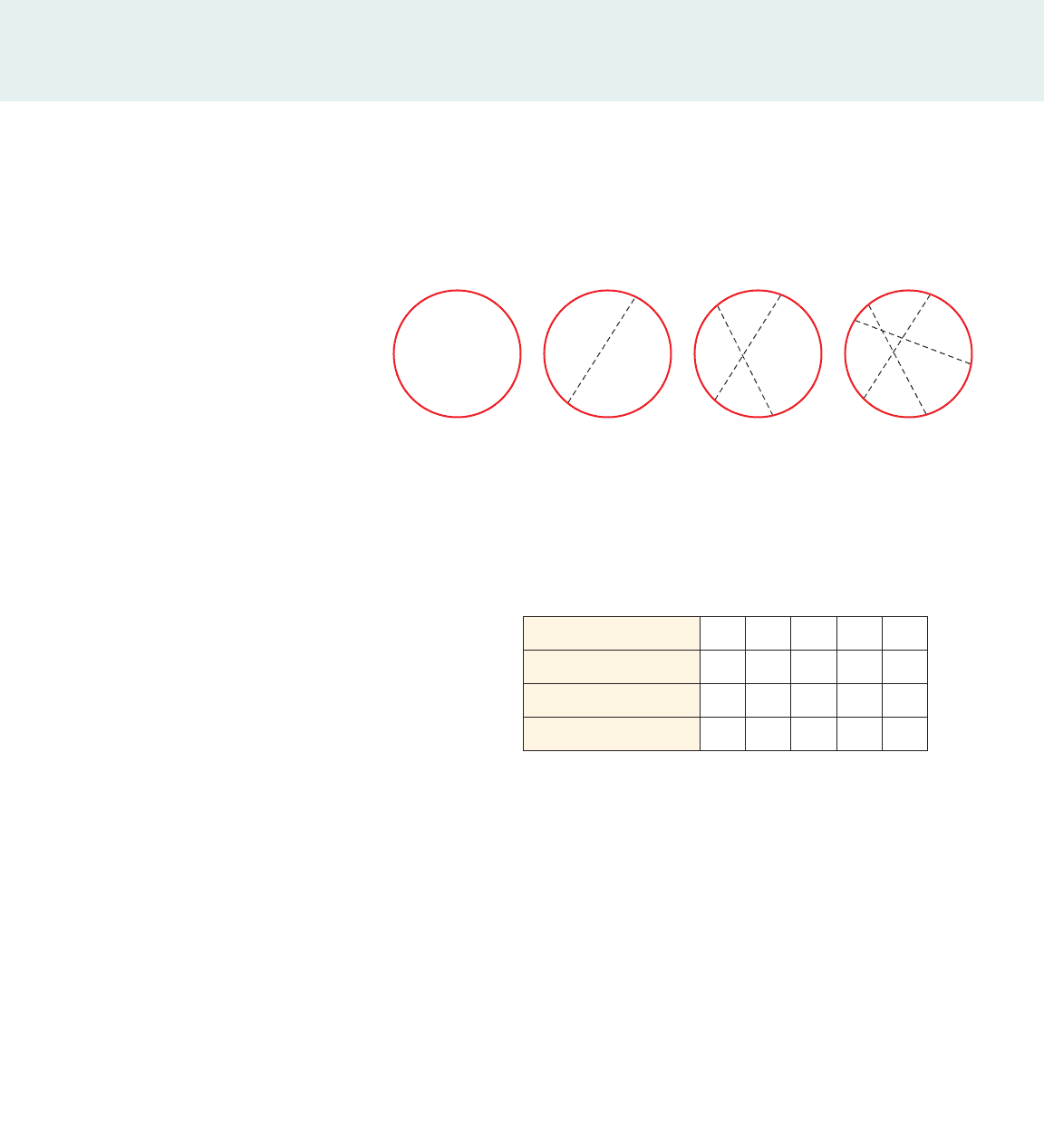
III. Cutting a Pizza
Let’s cut up a pizza—but not in the usual way. We want to cut the pizza in such a way
that we get the maximum possible number of pieces after each cut. The diagram
shows the number of pieces we can get by making 0, 1, 2, and 3 cuts.
1 2 4 7
Number of cuts n 0 1 2 3 4
Number of pieces f 1n 2
1 2 4 7 11
First difference —
Second difference — —
EXPLORATIONS
■
EXPLORATIONS
■
EXPLORATIONS
■
EXPLORATIONS
1. Let’s find a formula for the maximum number of pieces of pizza we can get by
making n cuts.
(a) Show that by making one more cut we can get 11 pieces of pizza.
(b) Complete the table for the first and second differences for the number of
pieces of pizza.
(c) Observe that the second differences are constant, so there is a quadratic
function
that models the data. Find a, b, and c by comparing the entries in the table
in part (b) to those in Table 1.
(d) A quadratic function that models the data is
Check that the function f models the data exactly. That is, check that
, . . . give the number of pizza pieces if we make 1, 2, 3, . . .
cuts.
(e) Use the model you found in part (d) to find the number of pieces of pizza
obtained by making 100 cuts.
f 102, f 112, f 122
f 1n2= ____n
2
+ ____n + ____
a = ________,b = ________,c = ________
f 1n2= an
2
+ bn + c
EXPLORATIONS 481
This page intentionally left blank
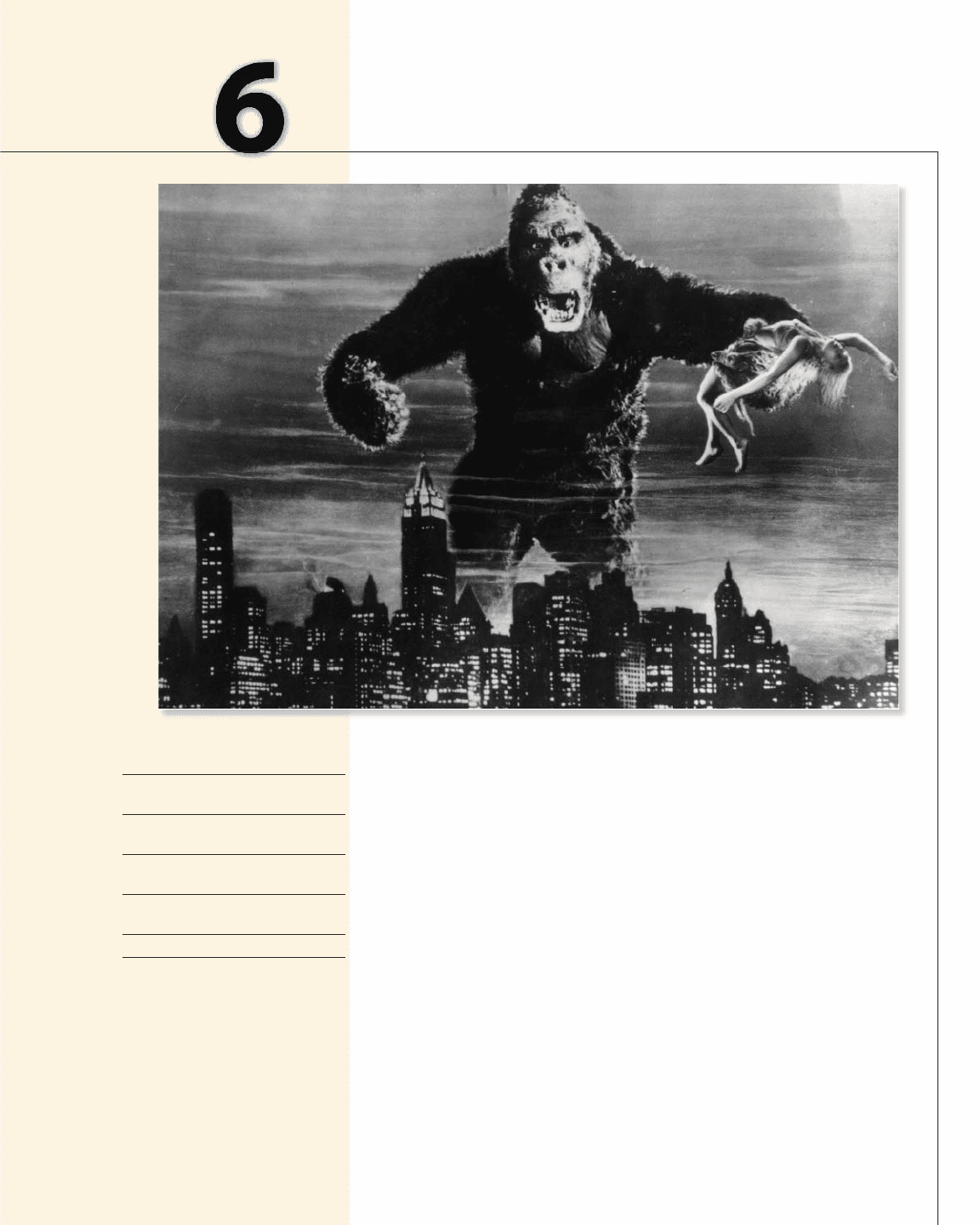
483
Only in the movies? Movies have some pretty fantastic creatures. Giant
apes as tall as skyscrapers, planet-sized spaceships, and a 50-foot-tall woman
(yes, there is such a movie: “Attack of the 50 Ft. Woman,” starring Daryl
Hannah in the 1993 remake of the 1958 cult classic). These creatures are so
large that they dwarf even giant prehistoric dinosaurs. Can such gargantuan
creatures actually exist? Should we fear that someday a real-life King Kong
might attack our towns? To answer such questions, we need to understand the
relationship between shape and size. Shape and size (length, area, and volume)
are related to each other by power functions, the main topic of this chapter.
We’ll see how power functions allow us to calculate the weight of a 500-foot
ape without having to actually meet one (see Exploration 1, page 554).
6.1 Working with Functions:
Algebraic Operations
6.2 Power Functions:
Positive Powers
6.3 Polynomial Functions:
Combining Power Functions
6.4 Fitting Power and Polynomial
Curves to Data
6.5 Power Functions:
Negative Powers
6.6 Rational Functions
EXPLORATIONS
1
Only in the Movies?
2 Proportionality:
Shape and Size
3 Managing Traffic
4 Alcohol and the Surge
Functions
Power, Polynomial,
and Rational Functions
Hulton Archive/Getty Images
